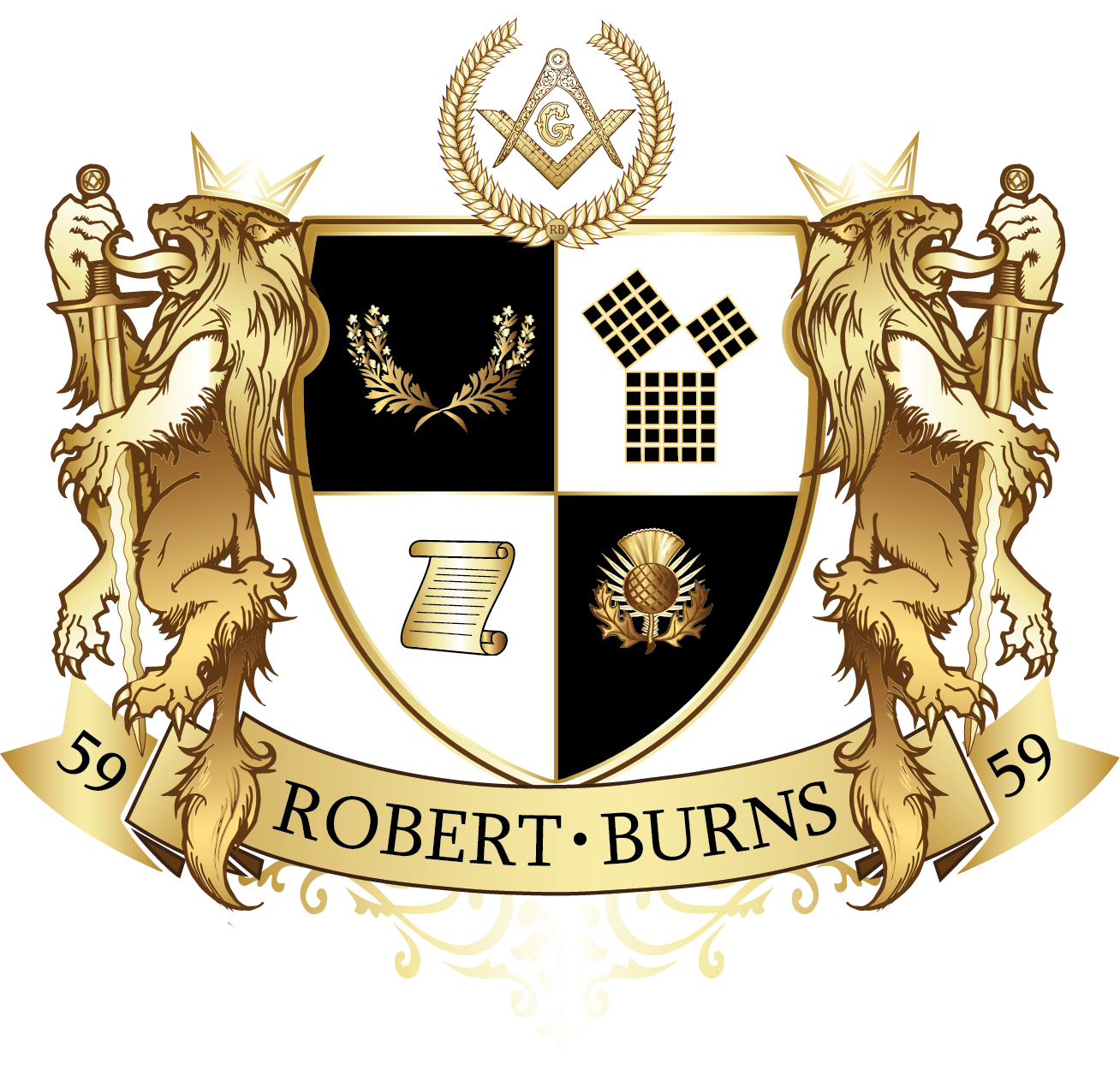The Opera Garnier: A Masonic Masterpiece
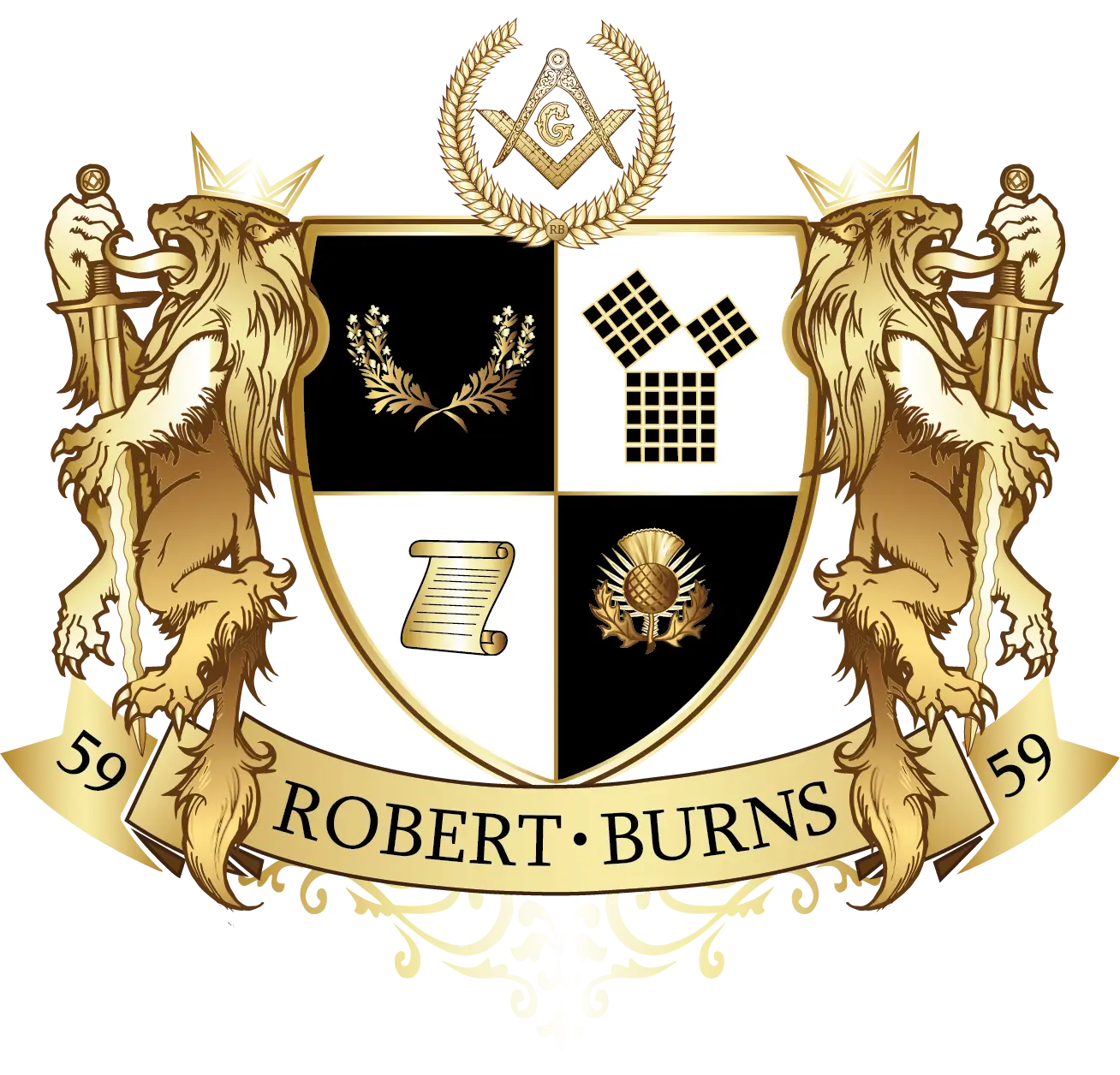
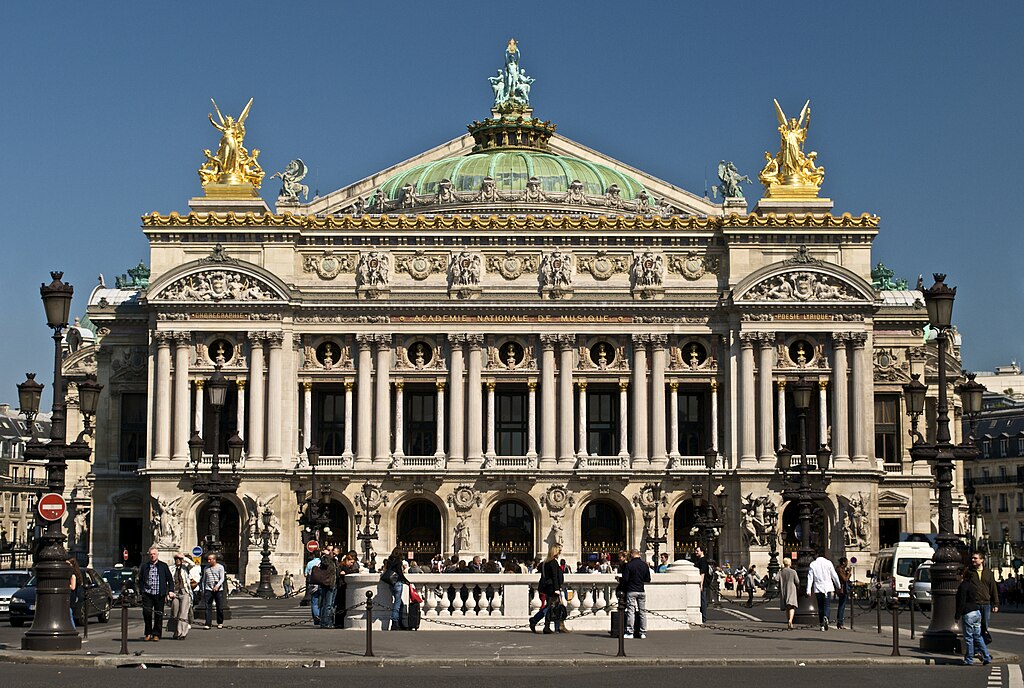
The Opera Garnier: A Temple of Light and Harmony Through Masonic Eyes
The Palais Garnier stands as one of Paris's most magnificent architectural achievements—a stunning embodiment of 19th-century artistic grandeur that continues to capture the imagination of visitors from around the world. For those of us within the Craft who appreciate the profound symbolism of architecture and the hidden language of stone, the Opera Garnier offers a particularly fascinating study. Its rich tapestry of symbolism, geometric precision, and allegorical decoration speaks directly to many of the same principles that we as Brothers hold dear, suggesting deliberate Masonic influences that reward the observant eye.
The Visionary Behind the Masterpiece: A Brother's Work?
The Opera's creation was entrusted to Charles Garnier (1825-1898), a relatively unknown architect who won the prestigious competition for the new Opera house in 1861. Born to humble beginnings as the son of a blacksmith, Garnier's rise to architectural prominence began with his admission to the École des Beaux-Arts and was cemented when he won the coveted Grand Prix de Rome in 1848, which allowed him to study the treasures of classical and Renaissance architecture in Italy and Greece.
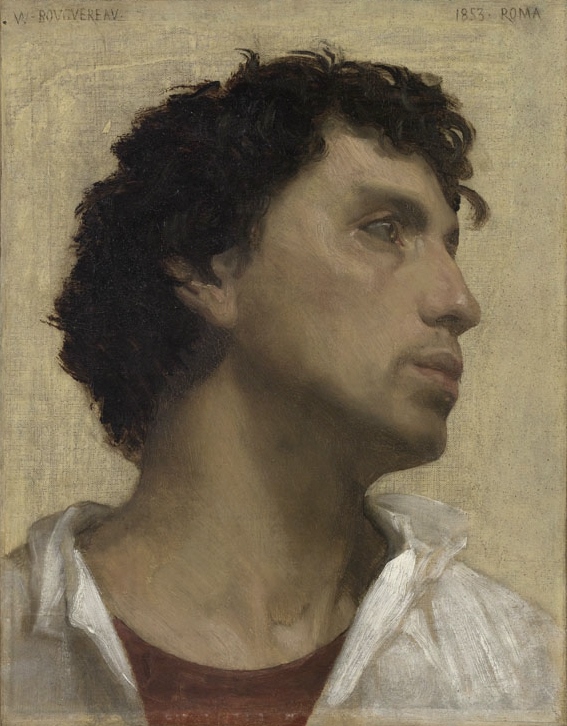
While documentary evidence of Garnier's Masonic membership remains elusive, many scholars of architectural symbolism have noted striking parallels between his design approach and Masonic philosophical principles. His obsession with light, geometric harmony, and the classical orders speaks to a mind steeped in the same traditions that inform our Craft.
His time in Italy and Greece profoundly influenced his architectural vision, immersing him in the principles of harmony, proportion, and the integration of arts that would later define his masterpiece. These principles—familiar to any Mason who has contemplated the symbolic meaning of our working tools—became the foundation upon which Garnier built his legacy. His travels through Greece also sparked his interest in architectural polychromy—the use of multiple colors in construction—reminiscent of the symbolic colors employed in various Masonic degrees.
A Monument Born of Tumultuous Times: Masonic Resilience
The commission for a new opera house arose from dramatic circumstances—an assassination attempt on Emperor Napoleon III near the previous opera house in 1858. This incident prompted the desire for a grander, more secure venue that would properly showcase French cultural supremacy during the Second Empire.
For those familiar with Masonic history, this period holds special significance. The Second Empire represented a challenging time for French Freemasonry, with imperial authorities maintaining surveillance over the lodges. Yet it was also a period of quiet resilience and intellectual development within the Craft. The liberal and progressive ideals that would flourish more openly in the Third Republic were being carefully nurtured within lodge rooms throughout France.
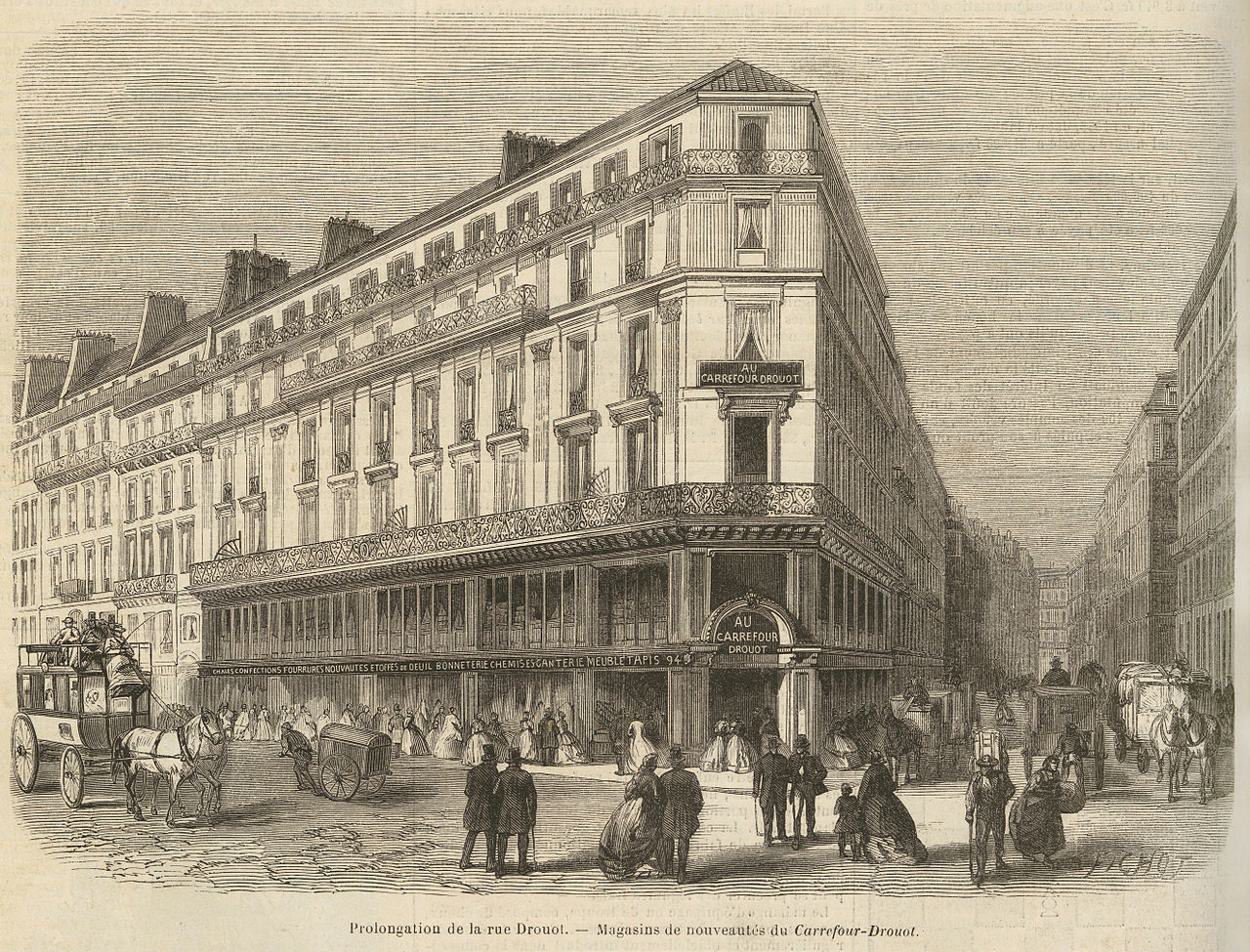
Construction of the Opera began in 1861 but would span fourteen turbulent years, including the fall of the Second Empire and the establishment of the Third Republic—a transition that brought greater freedom for Masonic activities in France. When the building finally opened in 1875, it had survived not only political upheaval but also significant engineering challenges, including the discovery of an underground water table that necessitated the construction of a massive concrete cistern—the origin of the legendary "lake" that would later inspire Gaston Leroux's "The Phantom of the Opera."
This triumph over adversity—transforming obstacles into foundations for greater achievement—resonates deeply with Masonic philosophy. The subterranean waters, rather than defeating the project, became incorporated into its design, much as our Craft teaches us to transform the challenges of life into opportunities for growth and enlightenment.
A Harmonious Marriage of Arts and Sciences: The Masonic Connection
What makes the Palais Garnier truly remarkable is its synthesis of seemingly opposing elements—a beautiful marriage of art and science, past and present, form and function. While its surface presents an exuberant celebration of the classical and the baroque, its structure incorporates the modern engineering of its time, particularly in its pioneering use of iron framework for floors, vaults, and the auditorium.

This duality perfectly mirrors the Masonic appreciation for both operative and speculative aspects of the craft—the practical knowledge of building combined with philosophical understanding. The Opera's hidden iron structure, carefully concealed behind marble, stone, and gold, embodies the Masonic principle that strength must underlie beauty, that the practical foundations support the visible splendor. Just as our ritual work conceals profound truths beneath symbolic language, Garnier's masterpiece hides its industrial skeleton beneath a magnificent skin of noble materials.
The Opera's construction itself followed principles familiar to any Mason. The laying of the cornerstone and foundation was meticulously documented, with the building rising progressively from darkness toward light, from the subterranean "lake" (actually a water reservoir built to address the high water table discovered during excavation) to the gleaming Apollo statuary crowning the edifice—a journey from the rough ashlar to the perfect ashlar that every Mason undertakes.
The Journey of Enlightenment: An Initiatic Path
The processional nature of the Opera's spaces creates a journey that unmistakably resonates with the Masonic path of personal transformation and enlightenment. Visitors enter through a loggia of seven arches—the number seven being of profound significance in our tradition—then ascend the Grand Escalier, a spectacular marble staircase that can be interpreted as an allegory for the Mason's ascent toward light and truth.
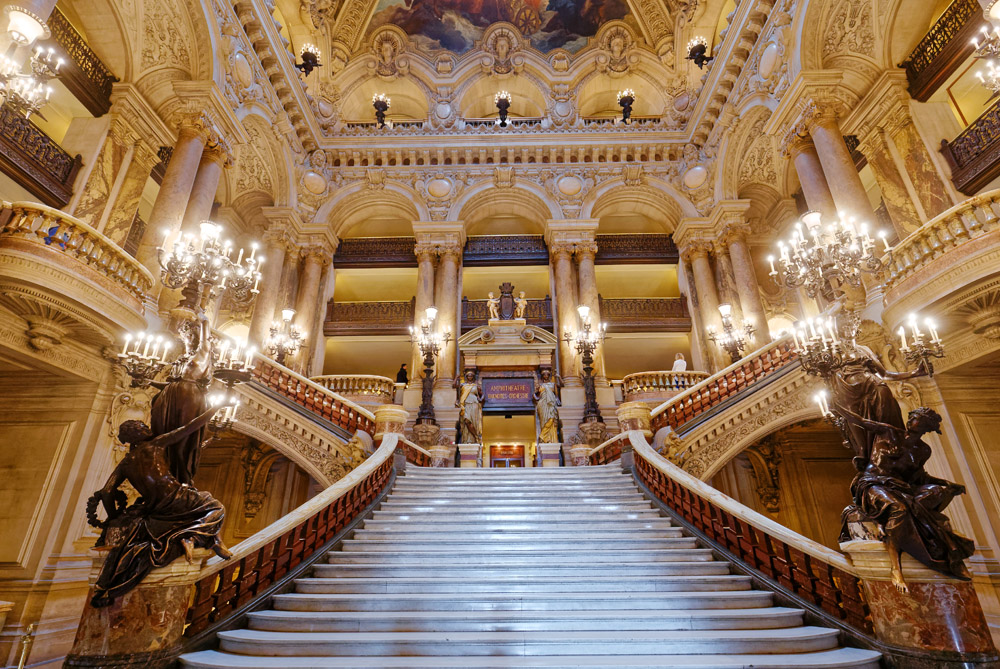
The Grand Escalier deserves special attention for both its dramatic impact and its rich symbolic elements. The sweeping double staircase rises within a vast, multi-storied hall of polychrome marble, onyx, and porphyry—materials chosen not merely for their beauty but for their symbolic resonance. At its base stand female figures bearing torches—light-bearers guiding the way upward, reminiscent of the Lesser Lights that illuminate our Lodge rooms.
For the initiated observer, the staircase's design suggests a structured progression of degrees, with distinct landings marking transitions between states of awareness. Some Masonic scholars have noted that the initial seven steps represent the seven liberal arts and sciences so important to our tradition, particularly music—the art celebrated within this temple of culture. The staircase thus serves not merely as passage but as a ceremonial path preparing the visitor for spiritual and cultural elevation.
Celestial Symbolism and the Balance of Opposites: A Masonic Cosmos
Among the Opera's most intriguing spaces—and most explicitly Masonic in their symbolism—are the Salon du Soleil (Sun Salon) and Salon de la Lune (Moon Salon), decorated in gold and silver respectively. These rooms, adjoining the grand Avant-Foyer, powerfully evoke the celestial symbolism central to Masonic tradition, representing the fundamental duality found throughout our rituals and teachings.
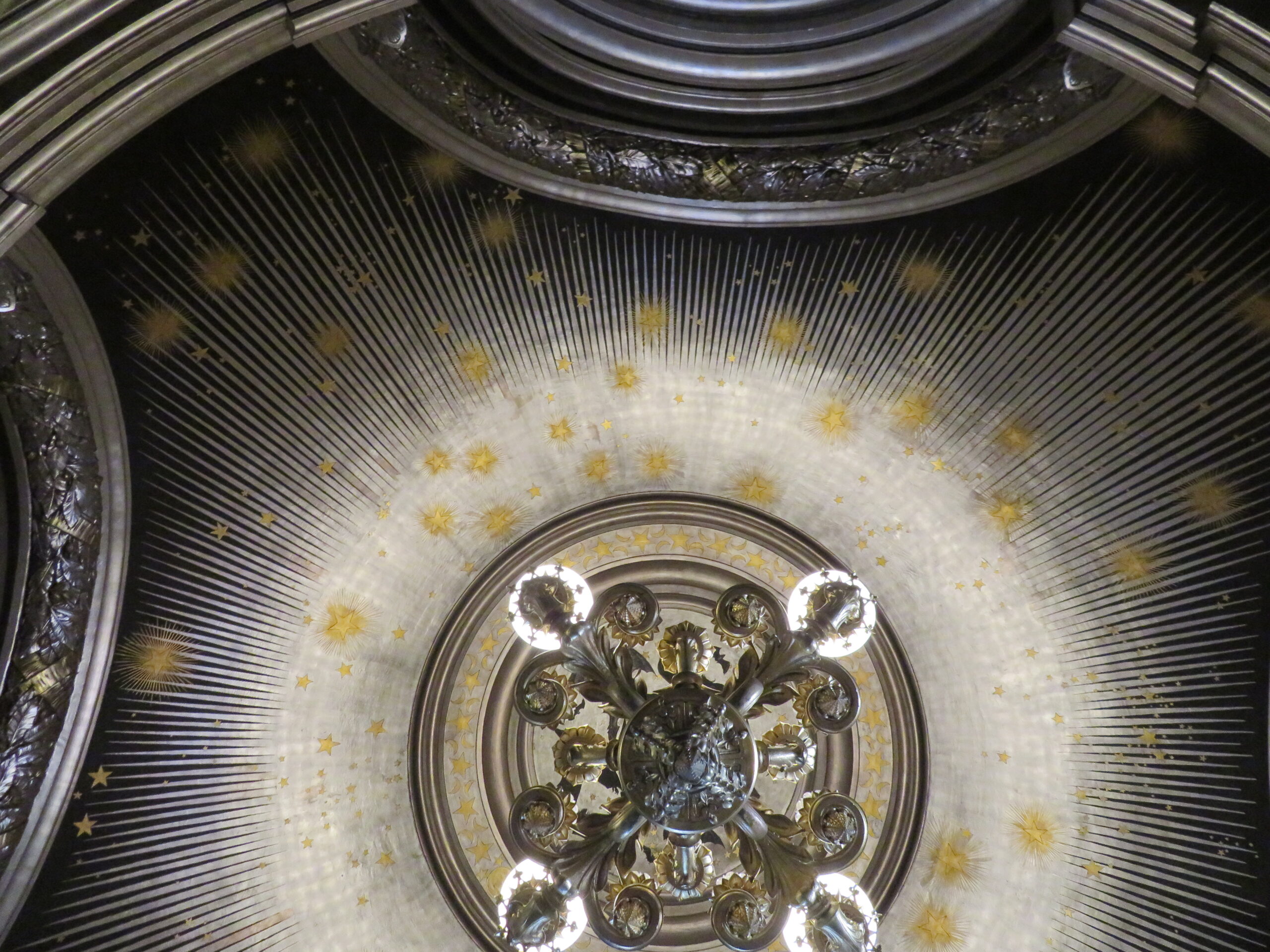
The Sun Salon features golden decoration with salamanders and solar motifs, while the Moon Salon is silvered and adorned with nocturnal creatures like owls and bats. To Brothers familiar with the symbolic positions of the Sun and Moon in our Lodge rooms, this juxtaposition carries profound meaning—representing the active and passive principles, the manifest and hidden aspects of knowledge, the complementary forces that, when balanced, produce harmony and wisdom.
Throughout the building, celestial themes continue with astronomical motifs and zodiacal references that would be familiar to any Brother who has contemplated the starry canopy of heaven in our Lodge symbolism. The magnificent chandelier in the auditorium, weighing over six tons, resembles the celestial sun illuminating the Lodge of human society below. The strategic use of mirrors throughout the building multiplies this light, creating an atmosphere of brilliance and revelation that echoes our quest to reflect and multiply the light of truth through our actions in the world.
The Temple of Music and Geometry: Sacred Measurements
Garnier publicly described his creation as "Napoleon III style," acknowledging its deliberate eclecticism. Yet a deeper examination reveals that beneath this stylistic fusion lies a rigorous adherence to principles of harmony and proportion that would be immediately recognizable to any Mason familiar with the geometric underpinnings of our Craft.

The building's proportions and plan follow geometric principles that echo those found in the design of Masonic temples throughout history. Its perfect axial symmetry, the careful progression of spaces from west to east, and the mathematical relationships between its dimensions all suggest knowledge of sacred geometry—the same mathematical language that informs the symbolic dimensions of King Solomon's Temple and our own Lodge rooms.
The Opera's rich allegorical program complements this geometric precision. The exterior is adorned with sculptures representing Music, Poetry, Drama, and Dance, while Apollo—god of music, light, and truth—crowns the façade in a position that recalls the Master's station in the East. Inside, Paul Baudry's ceiling paintings in the Grand Foyer depict themes from the history of music, creating a symbolic narrative that leads the viewer toward enlightenment through art.
The lyre, symbolic instrument of Apollo, appears repeatedly throughout the decoration—for Masons, a potent reminder that music is one of the seven liberal arts and sciences emphasized in our tradition. This focus on harmony through music deeply resonates with Masonic thought, where music is revered not merely as entertainment but as a divine language expressing the mathematical harmony of the universe designed by the Great Architect.
A Legacy of Light: From Darkness to Illumination
The Palais Garnier represents an extraordinary achievement in the use of light—perhaps the most fundamental of all Masonic symbols. Garnier insisted that the Avenue de l'Opéra remain free of trees to preserve unobstructed light flowing toward the building, creating a visual pathway of illumination leading to this temple of culture. Within, the strategic placement of windows, mirrors, and gilded surfaces creates an environment of graduated light that echoes the progressive illumination experienced by candidates advancing through Masonic degrees.
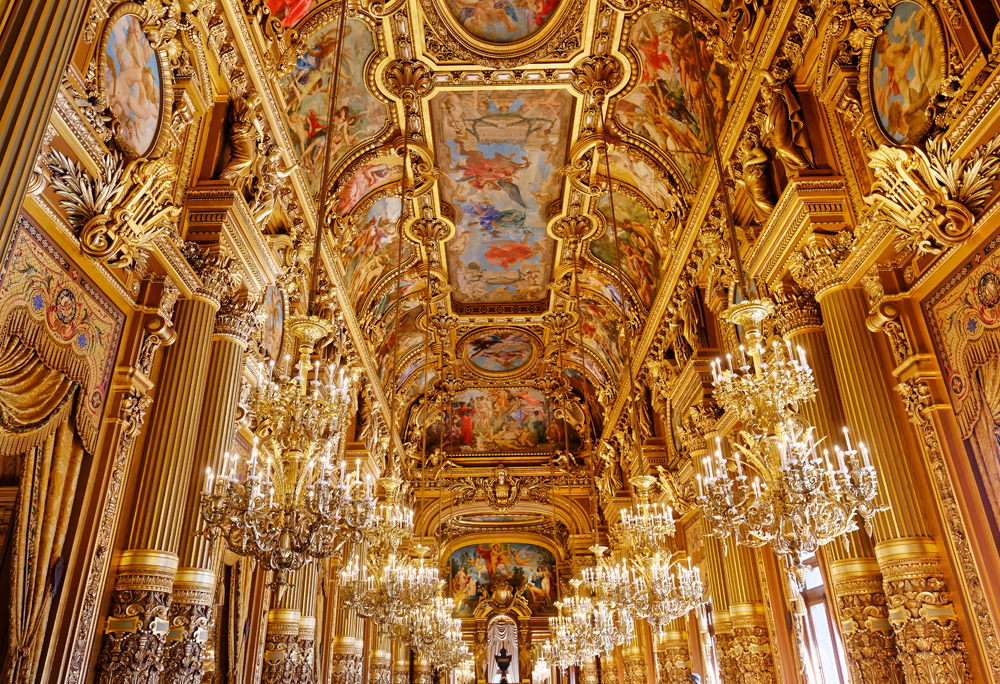
This deliberate manipulation of light is particularly significant to Brethren familiar with our own ritualistic emphasis on the journey from darkness to light. The Opera's interior spaces are arranged in a progression of increasing luminosity, from the more subdued entrance areas to the brilliantly illuminated Grand Foyer and auditorium—mirroring our own symbolic journey toward greater enlightenment.
The massive chandelier at the center of the auditorium serves as the building's central source of illumination—a perfect circle of radiance suspended at the precise center of the space, reminiscent of the blazing star that occupies a central position in our Lodge symbolism. This emphasis on light as both practical necessity and spiritual symbol is perhaps the most profound connection between Garnier's masterpiece and the Masonic tradition.
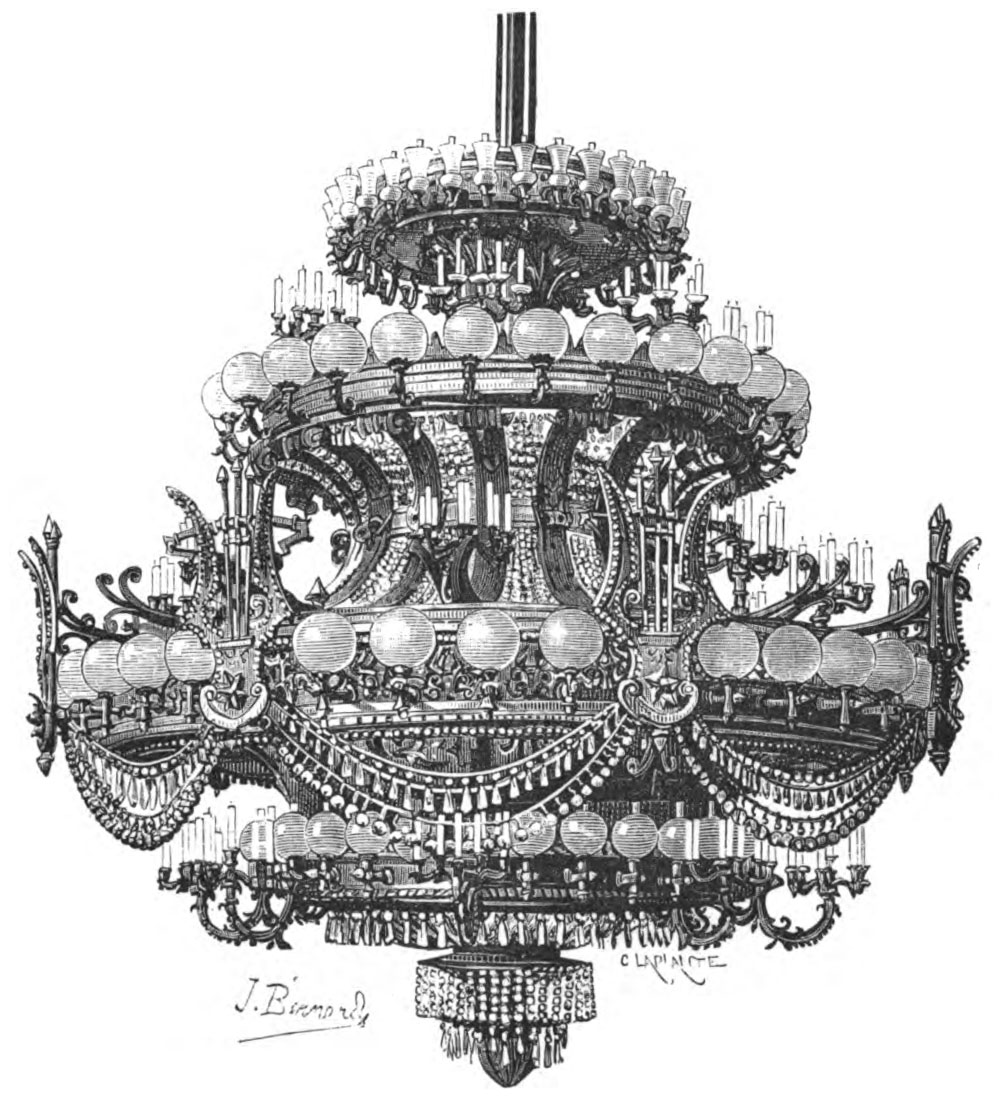
Masonic Influences and Continuing Inspiration
While definitive documentation of Charles Garnier's Masonic membership remains elusive, the profound correspondence between his architectural masterpiece and our Craft's symbolism and values is undeniable. The Opera Garnier embodies core Masonic principles that every Brother will recognize—the harmony of opposites, the perfect balance of strength and beauty, the skillful use of geometry, the journey from darkness to light, and the union of practical skill with philosophical understanding.
Several elements particularly suggest Masonic influence. The building's east-west orientation, the prominence of the numbers three and seven in its design, the dual pillars of the Sun and Moon salons, the emphasis on the classical orders (especially the Corinthian, representing Beauty), and the progressive journey through increasingly illuminated spaces—all echo patterns found in our Lodge rooms and ritual work.
The Palais Garnier thus stands as not only a temple of the performing arts but as a monument to principles cherished by Masons throughout the ages. For Brothers visiting Paris, it offers a unique opportunity to contemplate our timeless symbols expressed through magnificent architecture. As we climb the Grand Escalier, move through the harmoniously proportioned spaces, and observe the strategic interplay of light and shadow, we may recognize that beyond its function as an opera house, this edifice embodies a sophisticated symbolic language that speaks directly to those who have been initiated into the mysteries of our Craft.
Whether by conscious design or through the natural affinity between architectural genius and Masonic principles, Garnier created a structure that continues to remind us of our fundamental beliefs: that through beauty we may glimpse divine truth, that harmony arises from the balance of opposing forces, and that human creativity, guided by wisdom, reaches its highest expression when it elevates the spirit while honoring practical needs. In this magnificent temple of music and light, our Masonic values stand gloriously manifest in stone and gold, waiting to be recognized by those with eyes to see.
By Antony R.B. Augay P∴M∴
For Robert Burns Lodge 59, F∴& A∴M∴ of Nevada
